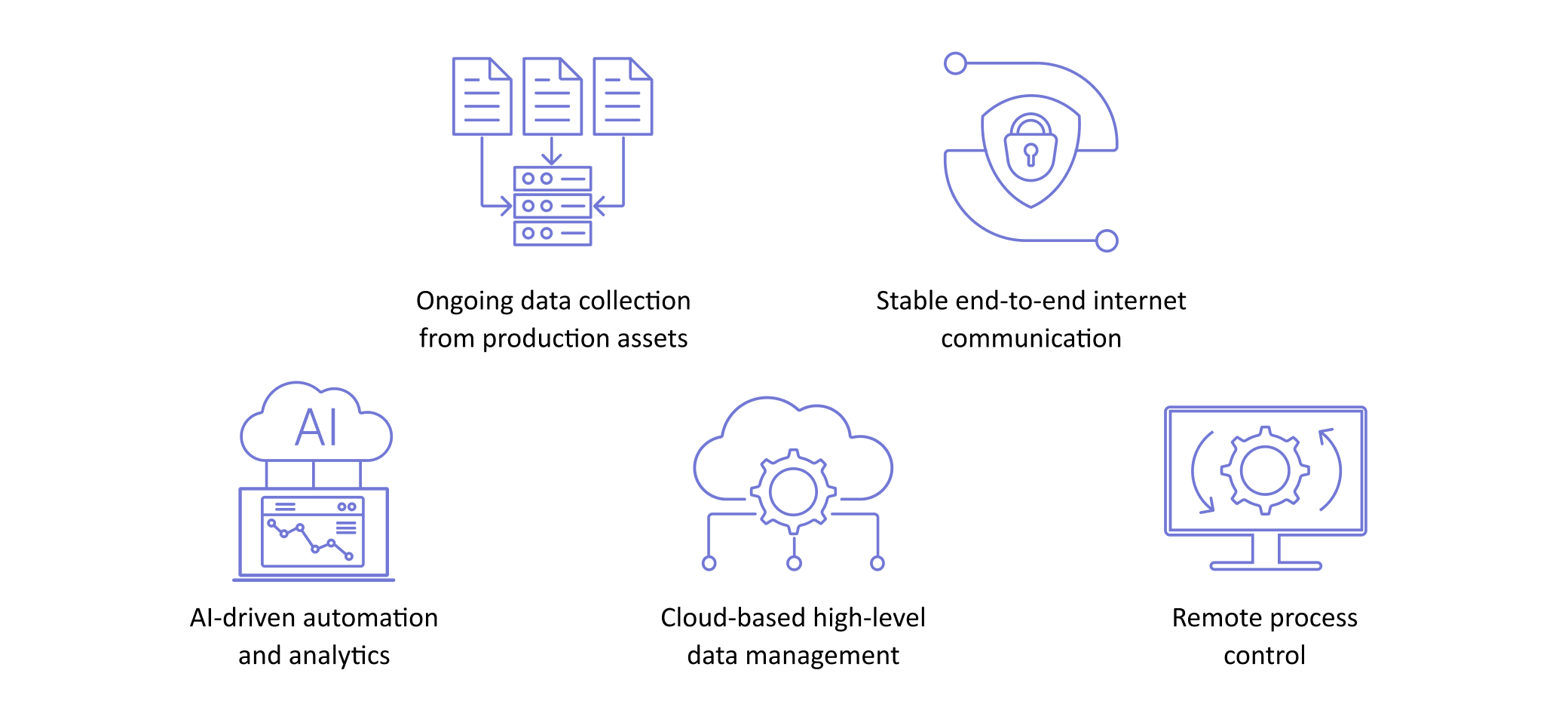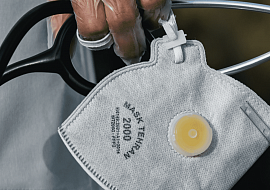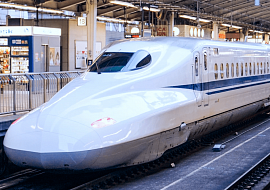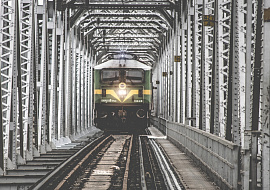Smart Factory: Basic Principles & Key Technologies
That’s why when facing irrevocable digital transformation, numerous productions recognize that it is more of a burden than an inspiring opportunity through the excessive resources required to establish compatibility. That’s why integration costs may be one-half of the total expense of an industrial IoT solution. This is nowhere near as successful as we expect from a project involving a Smart Factory.
The IT/OT convergence is particularly tangible for SMEs more likely to have lower digital maturity. To absorb the flexibility, transparency, and smart automation that intellectual production promotes, they always have to look for financially viable alternatives to total equipment fleet replacement, which often require unconventional approaches and great efforts. Today, the industrial world has accumulated various practices that help turn the heritage of traditional factories into an aid for the smart one. Let’s take a deep dive.
What is a Smart Factory?
Smart Factory is defined as a digitally supervised manufacturing facility that utilizes IoT and AI technologies within automation and end-to-end production control. Being fully equipped with sensors and transmitters, the smart factory “speaks for itself” providing transparent processes, advanced M2M connectivity, and profound analytics capabilities. Such features have unlocked the age of data-driven production bringing highly desired advantages, such as higher throughput, resolved bottlenecks, downtime elimination, and precise inventory control through full predictability, and strategy decision-making support.
Both corporations and SMEs are eager to embrace these lucrative advantages, but they often require structural refurbishment through the overlaying digital network on the manufacturing one. It naturally brings some gaps that should be meticulously investigated ahead.
For the factory to be called smart, the following processes have to be established:

For traditional manufacturing facilities such a transformation may seem unbelievable, but in fact, they frequently already possess a powerful production base to be seamlessly retrofitted to the intellectual production.
Smart Factory: Addressing Horizontal and Vertical Implementation Challenges
Both directions of IoT development have found their applications within intellectual production. First, IoT-based M2M connectivity promotes next-gen production-level automation, which corresponds to horizontal integration. Second, IoT-provided transparency and data abundance promote predictive analytics and data-driven executive support in key decision-making, which corresponds to vertical integration. Both integration options are highly interconnected, and upgrades for the production level usually prepare the ground for high-level analytics. The challenge for the company is to competently set priorities, and create an IoT implementation roadmap covering all the growth hacking opportunities.
It is worth building the entire concept first starting with high-level advantages, while starting implementation with the elevation of the production floor. Both horizontal and vertical implementation can require dramatic architecture adjustments.
IoT to SCADA or SCADA to IoT for a Smart Factory?
PLCs, RTUs, VFDs, and other control components are extremely powerful but have poor intelligence. The main insight here is that manufacturing enterprises already have a powerful hub for relevant data collection and production monitoring, which hasn’t been neglected. SCADA-based production systems are not a burden, but an assistant for the creation of ultimately efficient, resource-saving, and highly functional intellectual production systems. Moreover, such a solution becomes more cost-effective than building a second data-collection system from scratch to work in parallel.
There are two approaches to couple SCADA and IoT environments. IoT to SCADA integration provides control functions behind SCADA allowing for multiple IoT devices connection to replenish missed data. SCADA to IoT integration provides the path for the traditionally collected data to the cloud-based IoT platform, which can be leveraged within multiple applications. For instance, it delivers optimized control and advanced reporting through AI-enabled process analytics. Such an approach involves intermediate devices, such as gateways and switches, to establish connectivity. At the same time, ERP, OPC, and other enterprise management systems can be equally integrated into the IoT platform providing coherence in end-to-end management.
Automated Production Environment of a Smart Factory
The natural challenge of legacy-modern compatibility is addressed starting with building a mission-compliant architecture. For instance, every machine on site can be easily equipped with an IoT gateway for direct data transfer to the cloud. That would be an efficient, reliable, but incredibly expensive solution. It would be much more profitable to put transmitters to bring data to one central IoT gateway that would filter and forward relevant data to the cloud. As for data collection from legacy assets, they can be easily equipped with RFID tags or sensors – vibration, sound, ultrasonic, fluid, etc., depending on the measurement goal.
Shifting production to IoT requires a stable end-to-end connected environment to minimize delays and eliminate equipment downtime.
First, it’s about the rational distribution of computing power over the IoT ecosystem. When it comes to real-time operations with huge amounts of data, we don’t recommend applying for the cloud directly through band real width constraints. Instead, by empowering a hybrid (edge +cloud) environment, you increase the reliability of real-time operations and flexibility for the whole system. There is no need to replace workable PLCs with advanced IoT-enabled controllers, but it’s crucial to connect them to the internet. This is successfully solved via intermediate devices providing legacy-to-modern communication interfaces. As a rule, RS-232 or RS-485, MQTT with SSL/TLS protocols, and OPC architecture can be utilized to enable secure and reliable connection to the cloud, edge devices, and IoT gateways.
At the same time, the network topology has to meet the production conditions. For instance, it’s a common challenge to cover difficult-to-reach areas, go through walls and partitions, and overcome the high level of electrical noise. It can be tackled via BLE or Zigbee mesh networks that provide serial connections between all the endpoints without the mediation of a central unit.
For the production equipment to support an extended functionality scope that the IoT ecosystem may require, it can appear a need to replace the electronic components. Generally, hardware upgrades can promote memory extension, performance surge, and advanced AI-driven operations. The board needs to contain legacy interfaces as well, such as PCI or VGA. By integrating cutting-edge processors, such as Intel 7, the production can reach ten times higher performance.
Advanced Management & Decision-Making in a Smart Factory
Obsolete systems’ capacities are insufficient to transmit the data from every sensor to the central database, and even more to analyze and forward them back to the edge. Obsolete Database Management Systems can’t provide control for such a significant edge and cloud infrastructure required for a smart factory. Moreover, they can’t respond to the growth of connected devices, and provide flexible management options. This one more time highlights the need for a balanced architecture to contain edge hubs as well for competent distribution of the workloads.
Smart Factory showcases itself in all its glory when it comes to advanced analytics, and its most urgent application – predictive maintenance. A reliable data collection network helps gain redundant data to be thoroughly analyzed to identify signs of upcoming failure in advance and plan the maintenance accordingly. Moreover, it simplifies the search for productivity or energy efficiency bottlenecks, enhances quality control, and suggests better ways of resource allocation. Once you immerse AI in the specific production environment, it starts learning from custom samples providing ultimately accurate results. Both cost reduction and performance growth scenarios work here.
Adopt Technologies for Smart Factory with PSA
PSA assists manufacturing enterprises and product owners with industrial IoT development to meet the needs of a modern factory in terms of productivity, transparency, flexibility, and availability. We consider the most critical aspects to deliver hardware, software, and integrated products meeting the goals of a Smart Factory:
-
Integration of IoT platforms with production control systems and multiple device connectivity
-
Cybersecurity concerns to protect end devices, central units, and cloud connections
-
AI introduction to optimize production control and high-level decision-making
-
Scalability and flexibility potential to consider Smart Factory’s future needs
-
Versatile control options with the opportunity to connect advanced analytics















